Habenaria floribunda
(aka H. odontopetala in some interpretations, not a question to explore here)
Orchidaceae
Habenaria is massive genus of some 600 species, with about three or four in our usual radius of bioactivity. One locally occurring species, Habenaria repens (Waterspider False Rein Orchid), can exist oddly as a floating mat. But we’re here to talk about one to enjoy with dry feet, Habenaria floribunda, blooming abundantly in a pine woods near you. We went to Halpatioke Park in Stuart yesterday.
I’m reluctant to rattle on about the intricate pollination mechanisms of orchids, for a couple reasons, one is that that topic is documented to a farethewell elsewhere, so why bother here in our little “take a stroll and know the flowers you see” series? Thing is, this is one you DO see, so it is one to stop and contemplate and sniff, if you have good eyes and a good nose.
A wee bit of Orchid background. Orchid flowers deviate from “normal” flowers in certain specializations. Most Orchids have their pollen grains packed into masses called pollinia, so that pollination is not by single grains as in most flowers, but rather by Fed-Ex delivery of up to millions of grains all clumped together. These pollinia are variably “glued” onto the pollinating insects as they visit to probe for nectar. Although research is sparse, it is a good bet that most (but not all) Florida Habenaria pollination is the work of moths.
Let’s now use John’s beautiful close-up photos. Look first at the view straight into the blossom. And now we must resort to highly technical jargon: The blossom looks like an alien wearing a hood. The alien’s eyes are the pockets where the pollinia (pollen packets) lie in temporary storage. On either side of the alien’s white two-lobed lower lip are two small dark spots. Those two dark spots are sticky tabs that attach to the insect visitor. As the visitor probes for nectar those two sticky dots take hold on the bug’s face.
The nectar probing takes the form of the moth inserting its long needle-like proboscis into the alien’s mouth and downward into the alien’s long narrow chin where the nectar hides. As the moth pushes in, its face kisses the Orchid flower, coming into contact with those sticky pads.
The sticky pad now super- glued to the moth-face links to the polonium by a thread, so as the insect’s departure yanks the polonium free. Look closely at John’s side view photo. The thread connecting the pollinium with the sticky pad extends along a projection jutting out on either side of the alien’s two-lobed lower lip. The projection holds that sticky pad out there to punch the moth in the face. In the side view photo you can see the projection, the thread, and the sticky pad. (The polonium is up inside the hood not visible from the side.)
A pollinator-visitor arriving with pollinia glued to its face deposits the pollinia on the stigmatic surface (pollen-receiving surface). That surface has already been described as the alien’s two-lobed white lower lip just below the open mouth between the two sticky pads.
—————————————–
Vocabulary notes.
For readers preferring a more technical approach than made-up aliens, here is a photo of an actual Martian taken this week by the Curiosity. To repeat, the eye contains the pollinium. The orange sticky pad is called the viscidium, and the gray thread is called the caudicle. The open mouth leads to the nectar in the alien’s chin, also called the spur. The organ in Orchid flowers where the stamens, stigma, and style are fused into one is called the column.
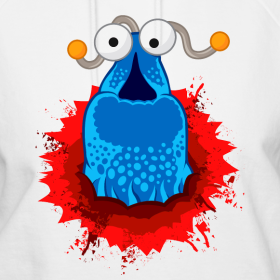
Actual Martian, with pollinia, threads, sticky pads, and mouth opening into spur. (See below for credit.)
(Martian photo source: http://droidloot.spreadshirt.com/yip-yip-alien-hoodie-chest-burster-A8895804. Pollinium on a pencil from http://darwin-online.org.uk/content/frameset?pageseq=1&itemID=F800&viewtype=text)
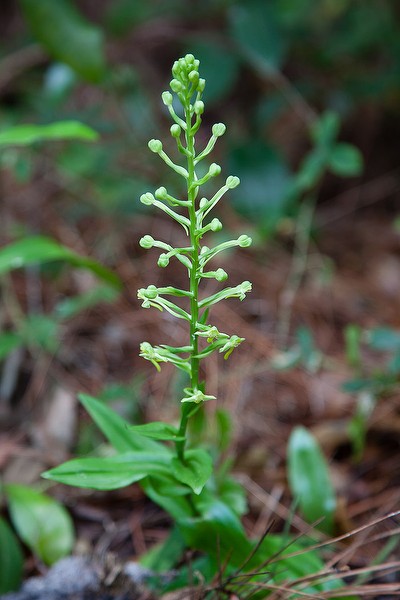
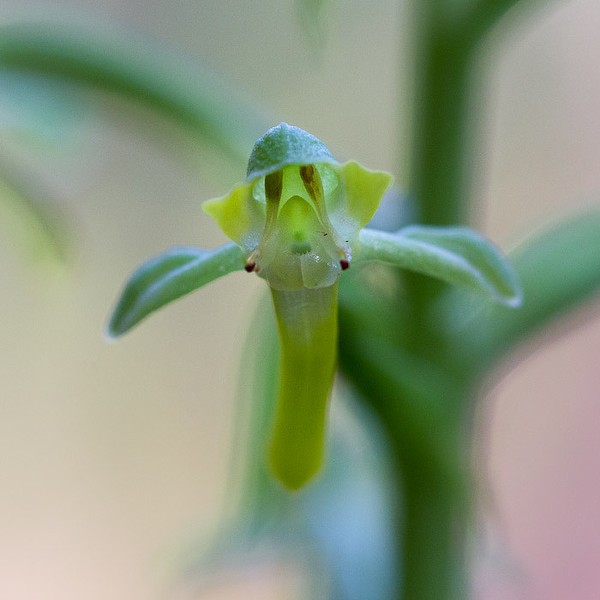
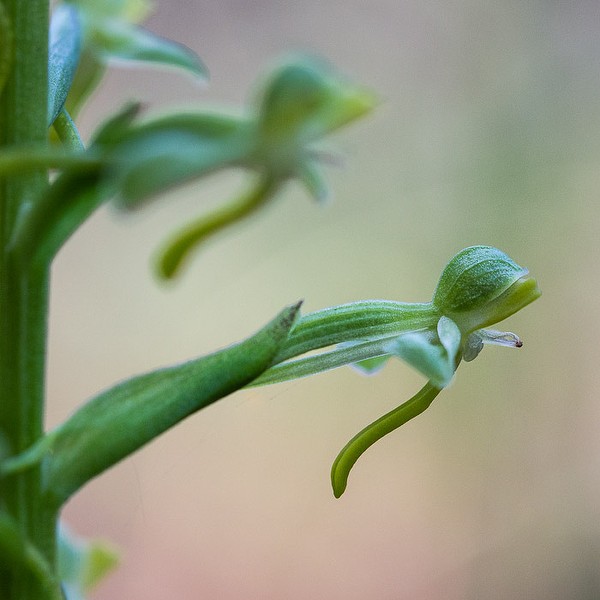
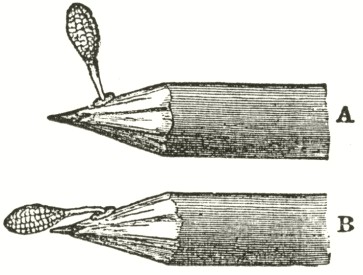
Mary Hart
December 3, 2012 at 3:22 am
Love the Martian – I’ll never look at my orchids in the same light again!
George Rogers
December 3, 2012 at 9:22 pm
Hi Rachel, What a pleasure to hear from you! Hope all’s well, George
Rachel Cavanaugh
December 3, 2012 at 9:18 pm
Thanks for the botany lesson, George!! Brings back good memories of all those great hort classes!!
annsbirdventures
February 3, 2013 at 11:03 am
George, I almost understand Martians as well as I understand Botany! But I love Habenarias.
Ann Weinrich
George Rogers
February 4, 2013 at 8:40 am
Hello Ann, Orchids polllinated by birds–that would be interesting to explore.